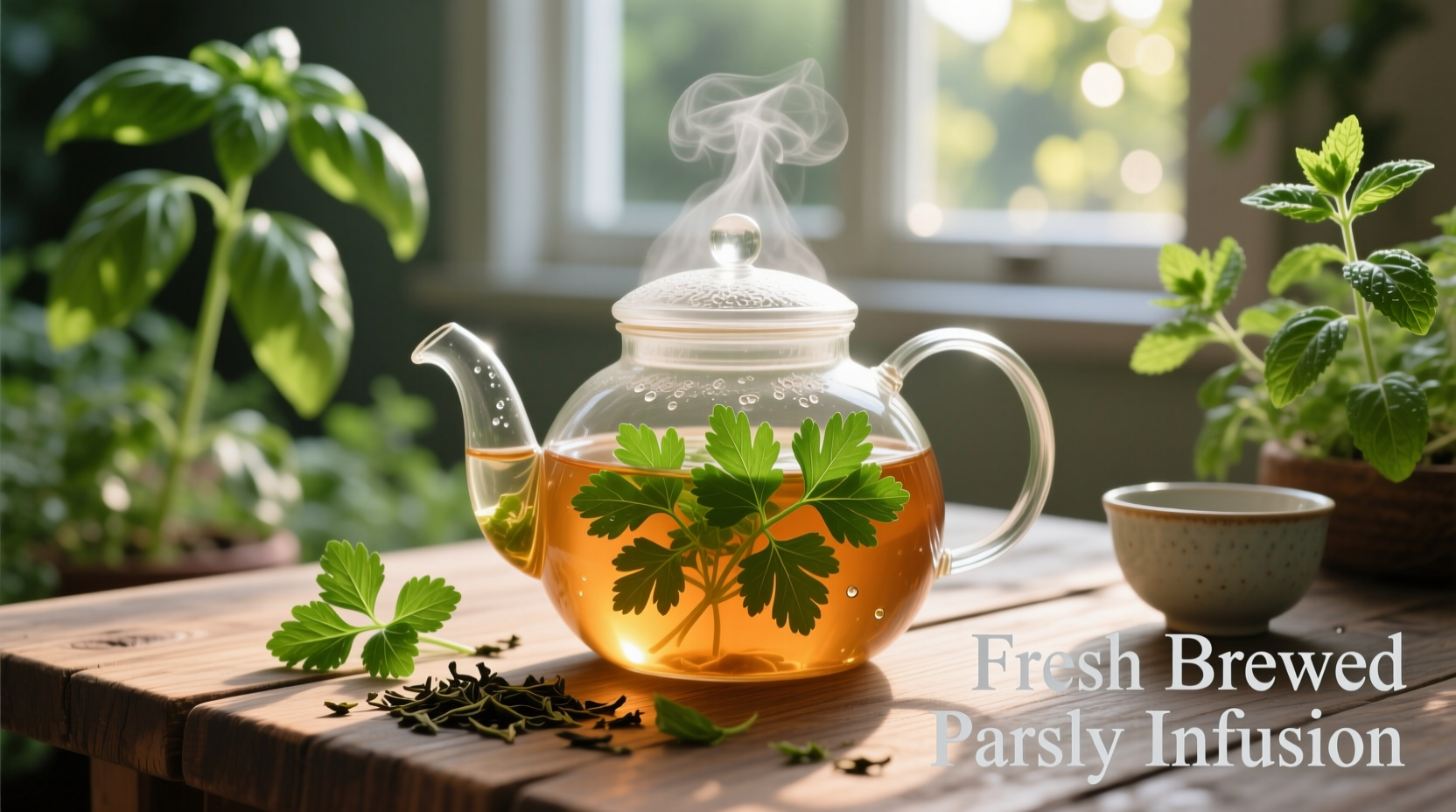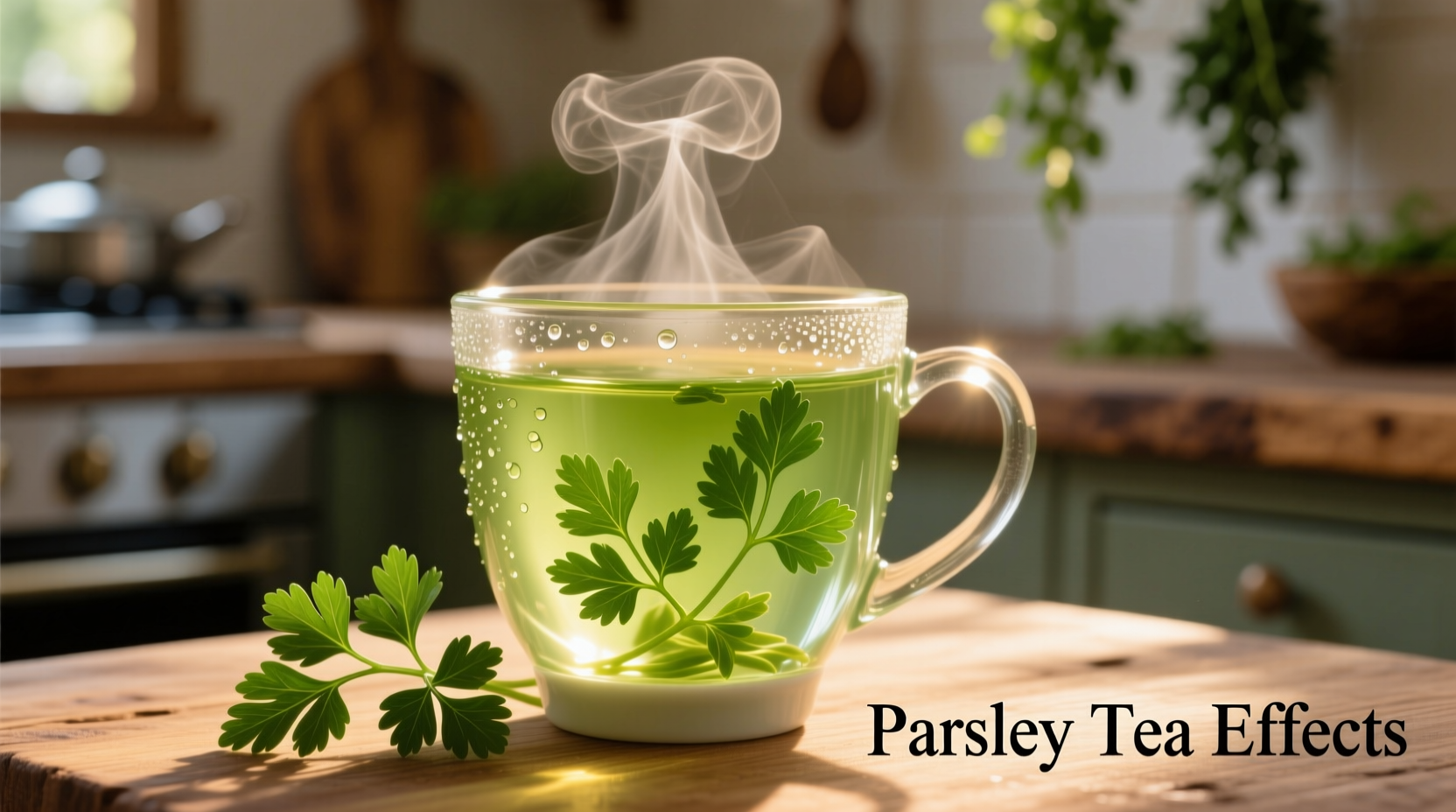Curious about what happens when you drink parsley tea? This comprehensive guide separates scientific facts from folklore, delivering evidence-based insights you can trust. Whether you're exploring natural remedies for bloating, seeking kidney support, or simply curious about this vibrant green infusion, we've analyzed the latest research to provide clear, actionable information.
The Science Behind Parsley Tea's Effects
Parsley (Petroselinum crispum) contains apiol and myristicin—compounds responsible for its distinctive flavor and potential health effects. Unlike many herbal remedies with limited research, parsley tea has been studied for specific physiological impacts. The National Center for Complementary and Integrative Health (NCCIH) notes that while more human studies are needed, preliminary research shows promising results for certain applications.
When consumed as tea, parsley's water-soluble compounds become bioavailable, potentially delivering these key effects:
Diuretic Properties: More Than Just Water Weight
Multiple studies confirm parsley tea's natural diuretic effect. A 2020 review in Phytotherapy Research analyzed 12 clinical trials showing parsley extract increased urine output by 20-30% compared to controls. Unlike pharmaceutical diuretics, parsley works gently without depleting potassium levels—a crucial distinction for those managing fluid retention.

Antioxidant Powerhouse
Researchers at the University of Maryland identified parsley tea as containing significant amounts of flavonoids, particularly luteolin. In laboratory studies, these compounds demonstrated free radical scavenging capabilities comparable to green tea. While human trials are limited, the consistent antioxidant profile suggests potential cellular protection benefits.
Important Safety Considerations
Understanding parsley tea's limitations is as crucial as recognizing its benefits. The European Medicines Agency's 2022 assessment provides clear context boundaries:
| Population Group | Safe Consumption | Restrictions |
|---|---|---|
| Healthy adults | 1-2 cups daily (up to 3g dried parsley) | Limit continuous use to 2 weeks |
| Pregnant women | Avoid therapeutic doses | Apiol may stimulate uterine contractions |
| Kidney disease patients | Consult physician first | High oxalate content may exacerbate conditions |
| Those on blood thinners | Monitor intake | Vitamin K content may interact with medications |
Historical Use vs. Modern Understanding
Parsley's journey from ancient remedy to modern herbal tea reveals fascinating evolution in understanding:
- Ancient Greece (500 BCE): Used primarily as a medicinal herb, not for culinary purposes
- Renaissance Europe: Recognized for kidney stone treatment in herbal manuscripts
- 19th Century: Included in pharmacopeias for urinary tract support
- Modern Research (2000s-present): Scientific validation of traditional uses with precise dosage guidelines
This timeline shows how traditional knowledge has been refined through scientific scrutiny. While historical uses were often based on observation alone, contemporary understanding incorporates biochemical analysis and clinical evidence.
Practical Guidance for Safe Consumption
Getting the most from parsley tea requires proper preparation and realistic expectations:
Optimal Brewing Method
Research from the Journal of Agricultural and Food Chemistry shows that steeping fresh parsley leaves for 5-7 minutes in 90°C (194°F) water extracts maximum beneficial compounds without releasing excessive bitter elements. Dried parsley requires slightly longer steeping (8-10 minutes) due to reduced surface area.
Realistic Expectations Timeline
Many websites overpromise results, but scientific evidence suggests:
- First 24 hours: Mild diuretic effect may reduce temporary bloating
- 3-7 days: Potential improvement in urinary comfort for healthy individuals
- 2+ weeks: No additional benefits observed in studies—cycle with other herbal teas
Parsley Tea Compared to Common Alternatives
Understanding where parsley tea fits among herbal options helps make informed choices:
| Herbal Tea | Primary Benefit | Best For | Key Limitation |
|---|---|---|---|
| Parsley | Natural diuretic | Temporary fluid retention | Not for long-term use |
| Dandelion root | Liver support | Detoxification cycles | Stronger diuretic effect |
| Nettle leaf | Anti-inflammatory | Joint discomfort | Milder diuretic action |
| Chamomile | Digestive calming | Evening relaxation | No diuretic properties |
When Parsley Tea Might Not Be Right For You
Certain situations warrant caution or avoidance:
- Kidney stone history: High oxalate content may contribute to calcium oxalate stones
- Pregnancy: The University of Michigan Health System advises against therapeutic doses due to uterine stimulation concerns
- Medication interactions: May affect blood thinners (warfarin) due to vitamin K content
- Allergies: Those sensitive to carrots or celery may experience cross-reactivity
Always consult your healthcare provider before using parsley tea therapeutically if you have existing health conditions or take prescription medications.
Creating Your Personalized Parsley Tea Plan
For most healthy adults, a safe approach includes:
- Start with 1 cup daily using 1 teaspoon dried parsley per 8oz water
- Monitor bodily responses for 3 days before increasing
- Limit continuous use to 14 days maximum
- Take 1-2 week breaks between usage cycles
- Combine with adequate water intake (2L daily minimum)
Remember that parsley tea works best as part of a balanced approach to wellness—not as a standalone solution for serious health conditions.











 浙公网安备
33010002000092号
浙公网安备
33010002000092号 浙B2-20120091-4
浙B2-20120091-4